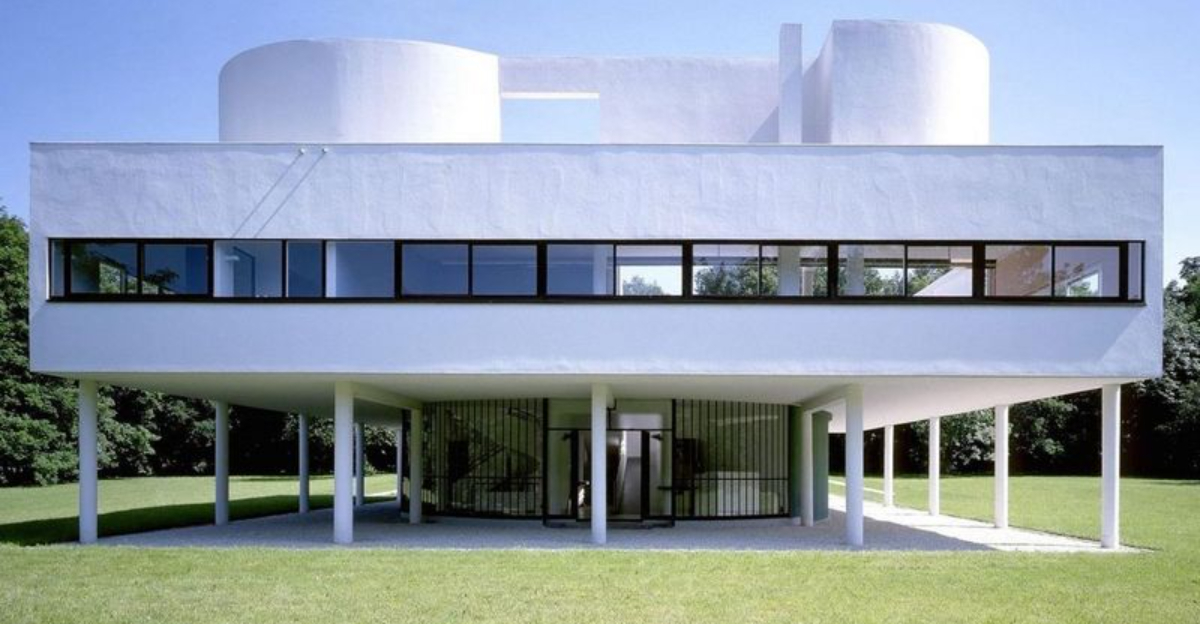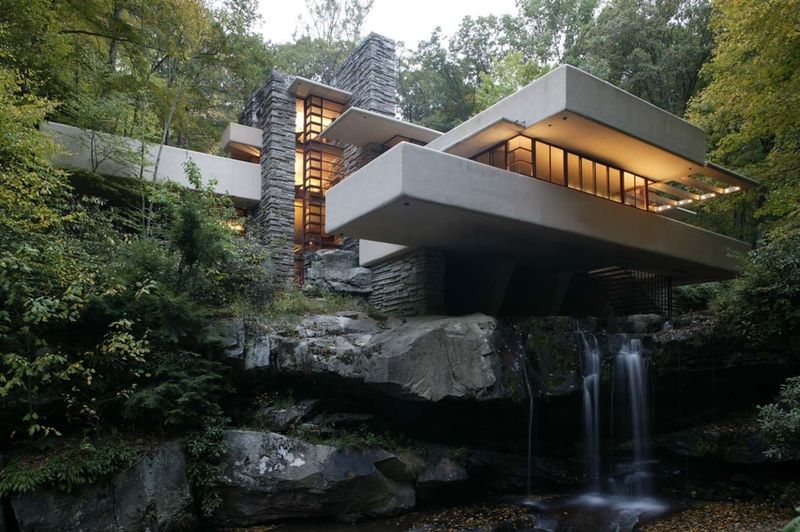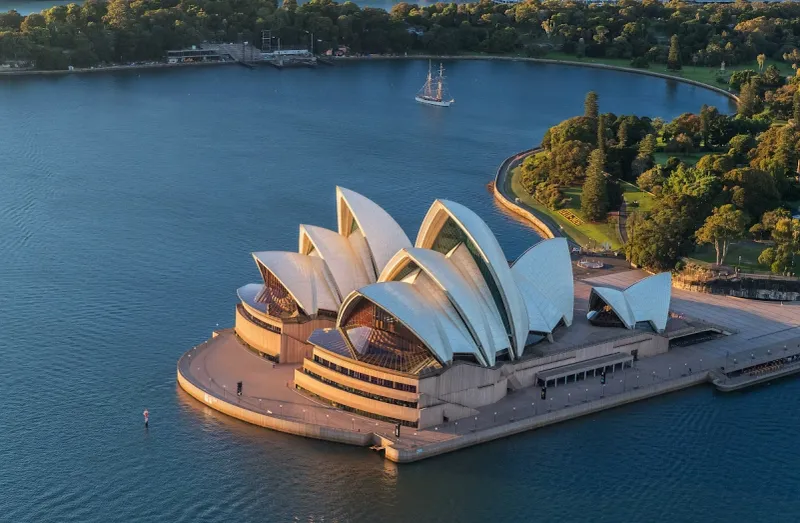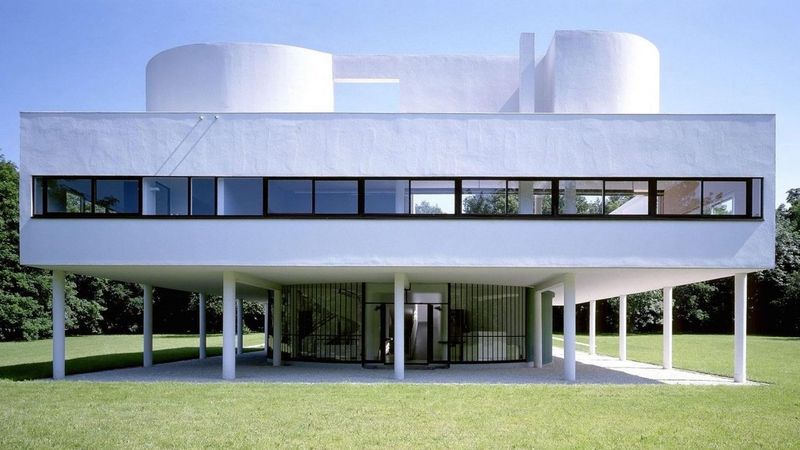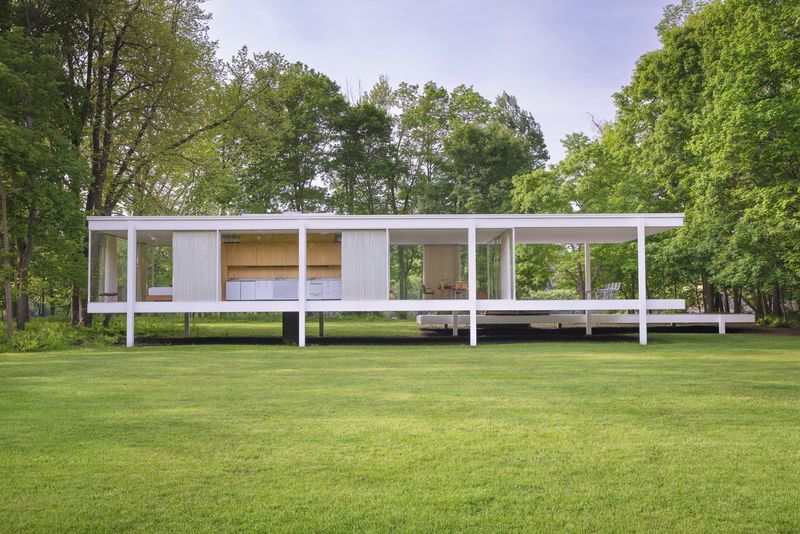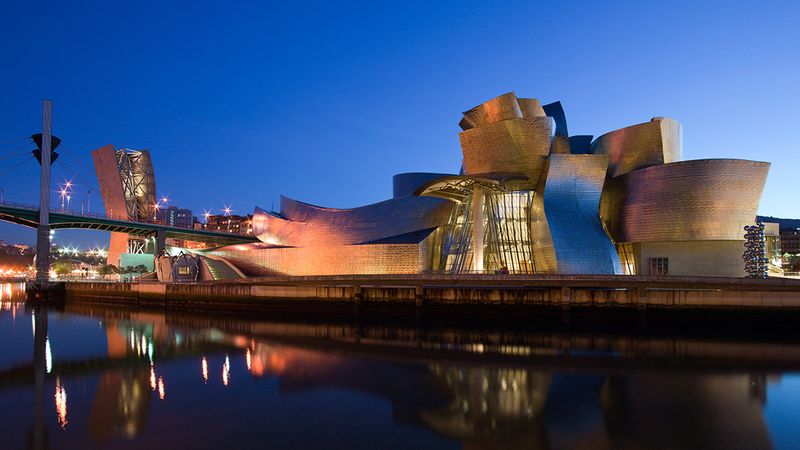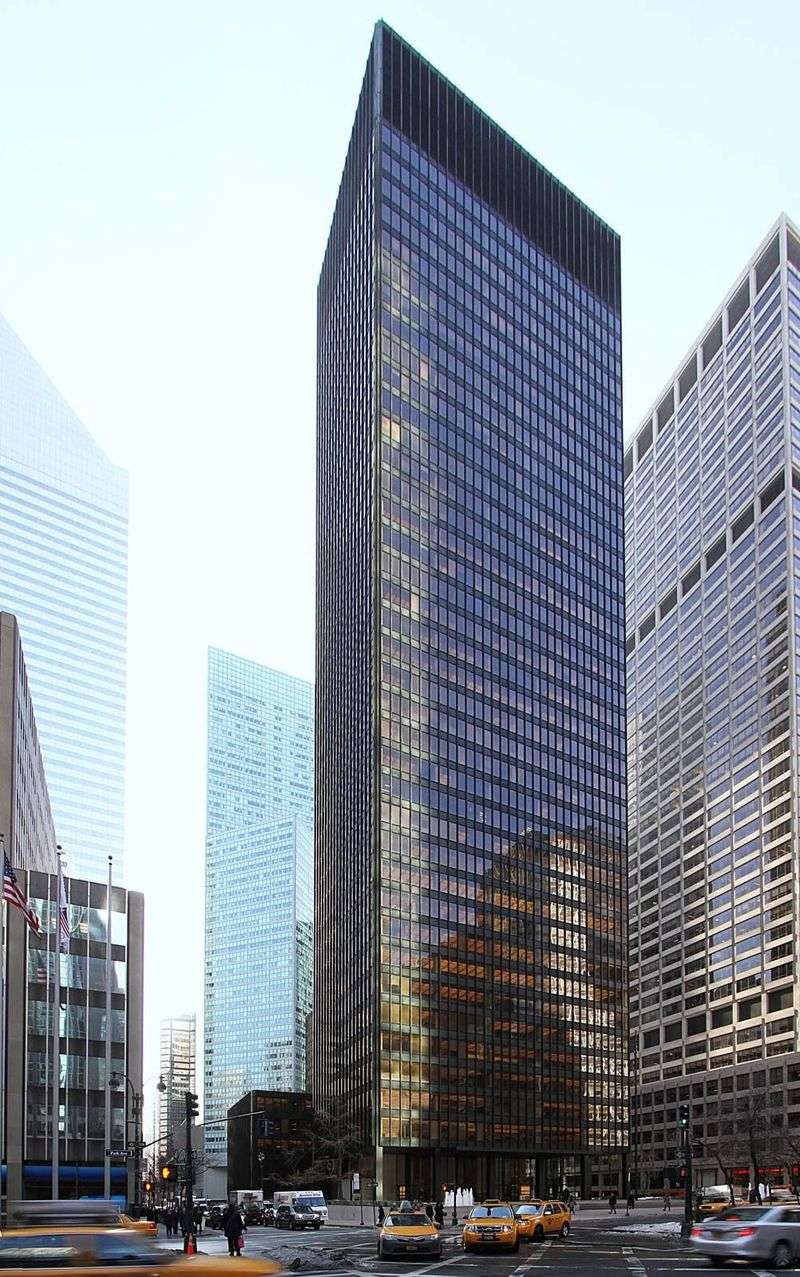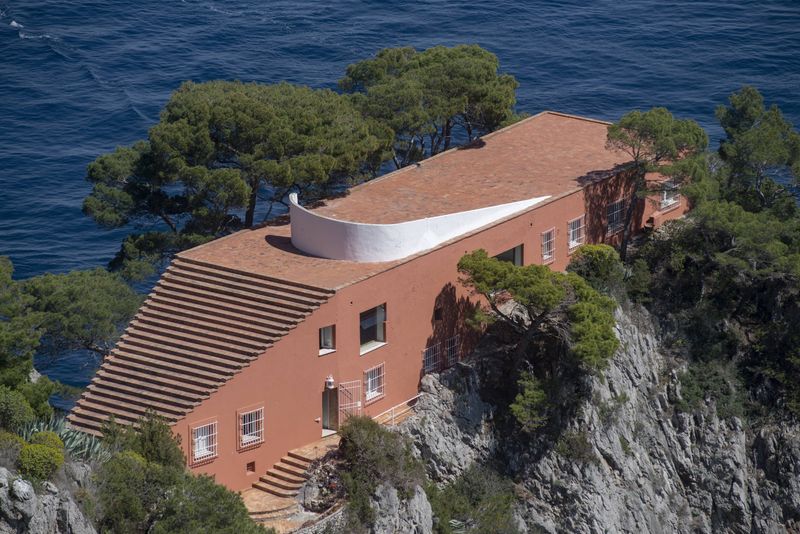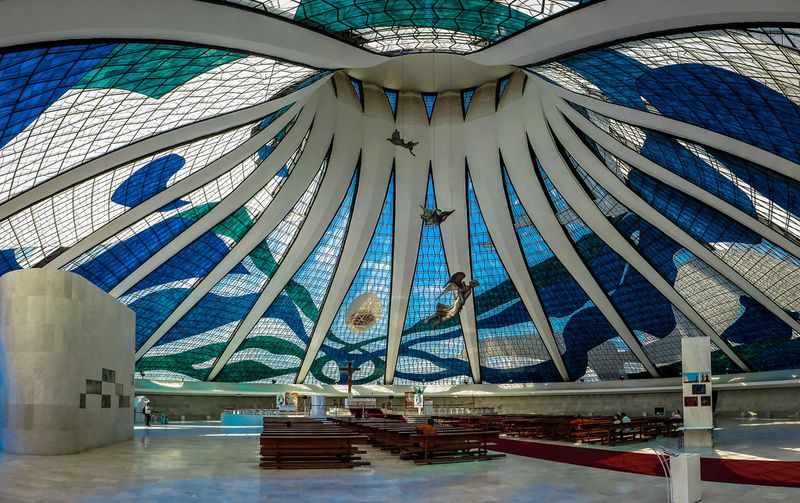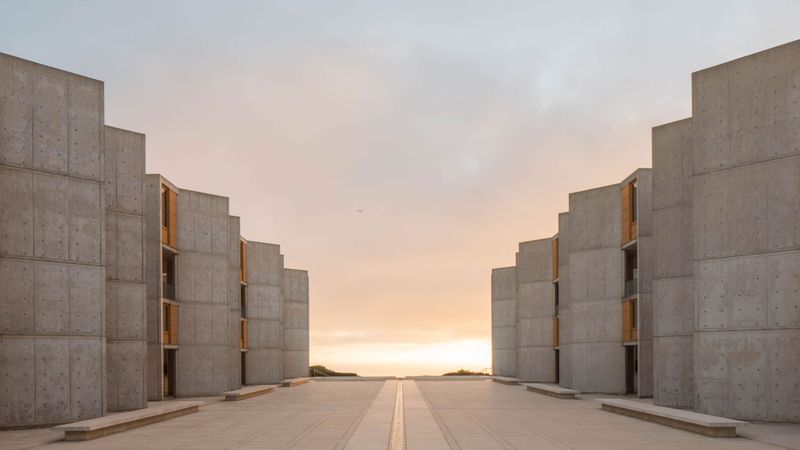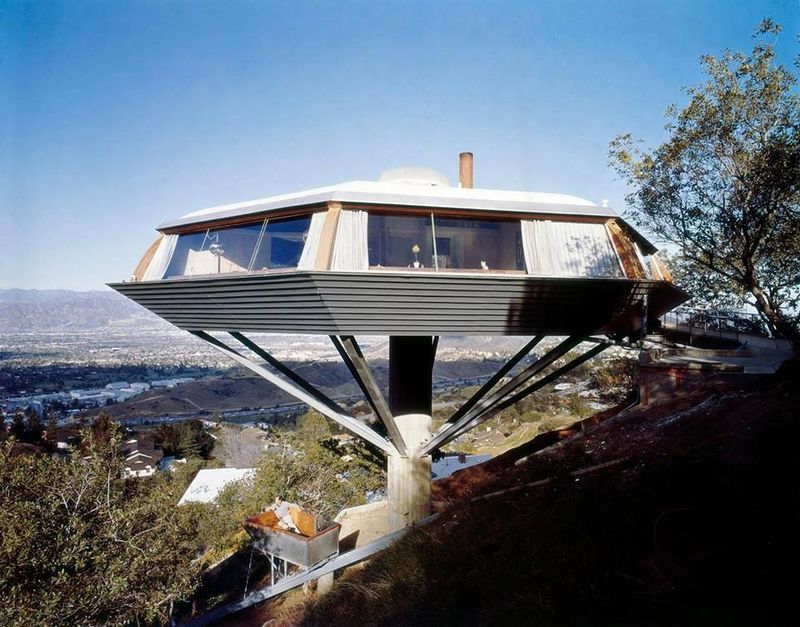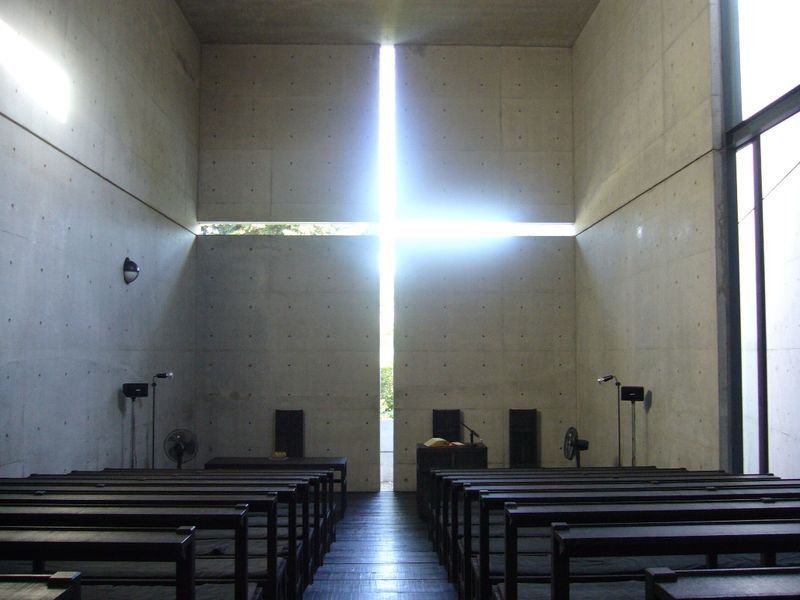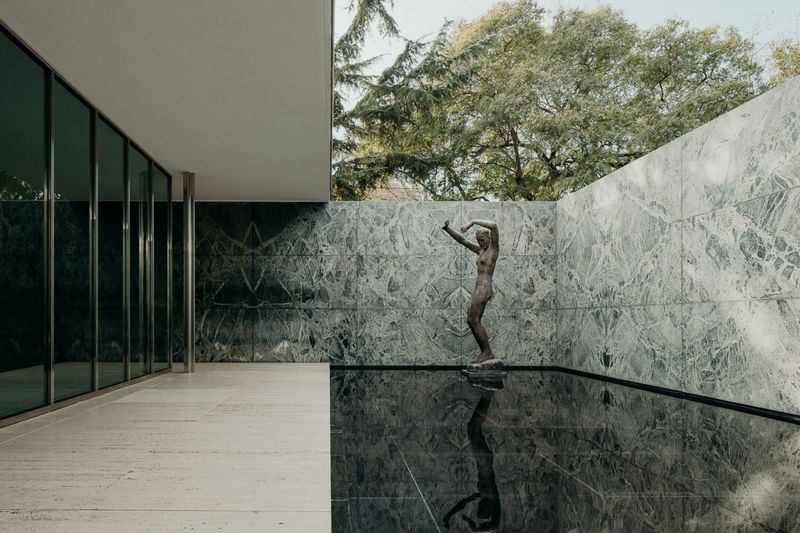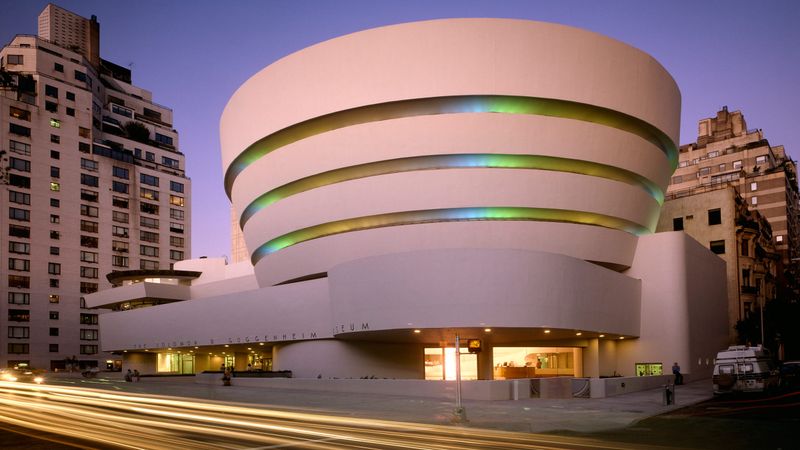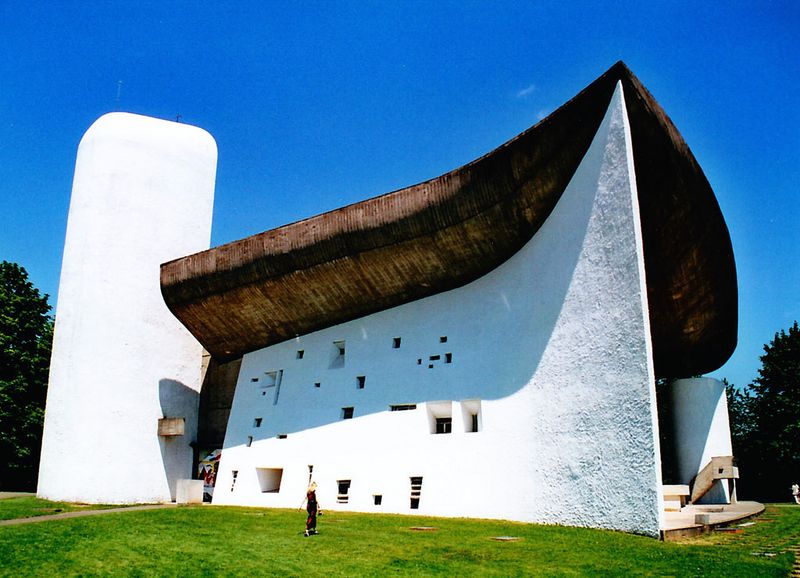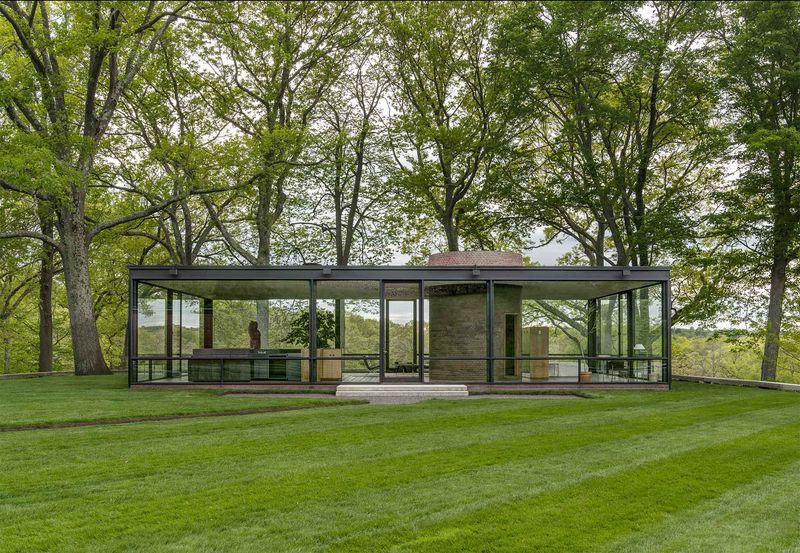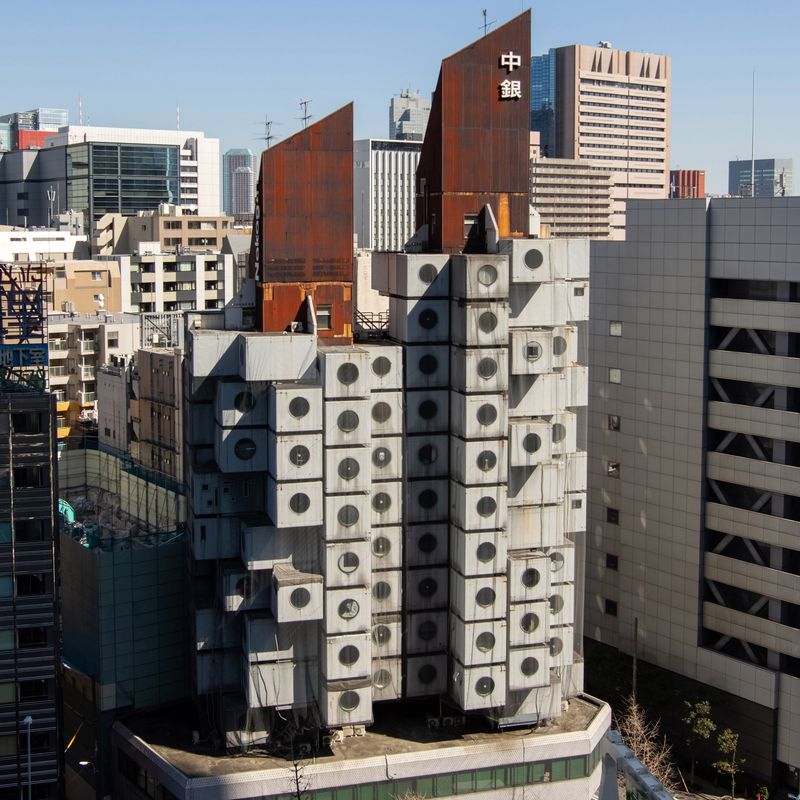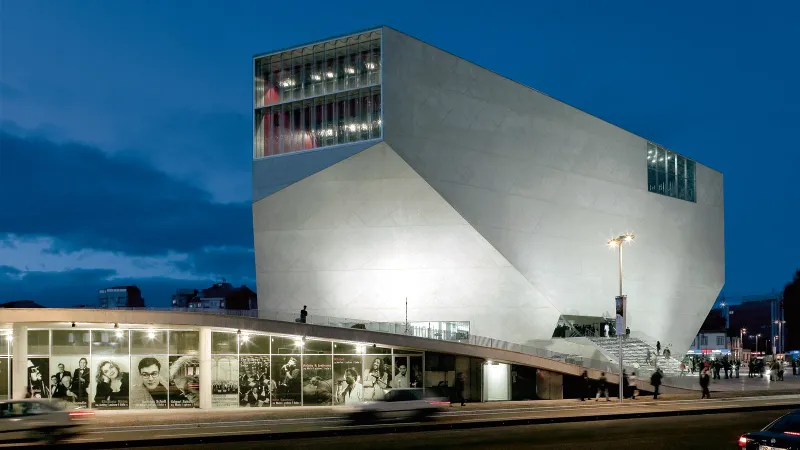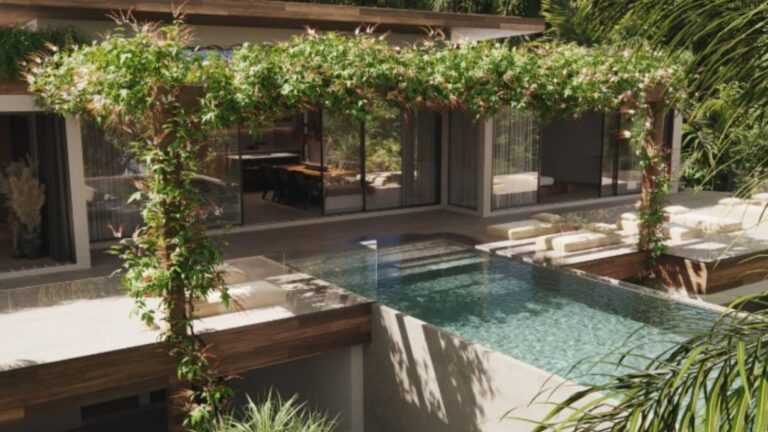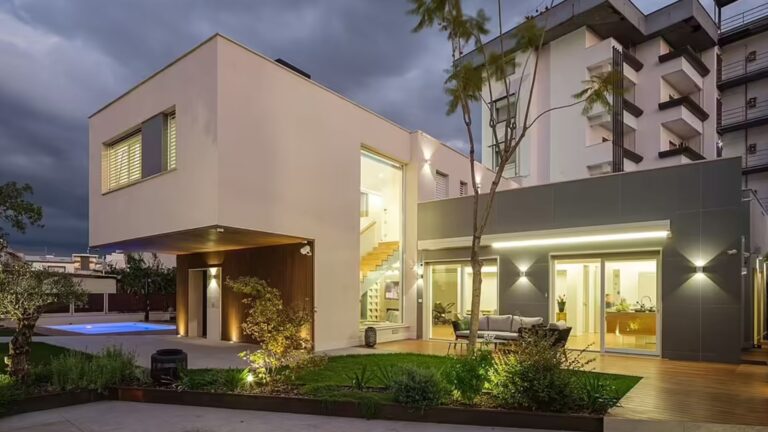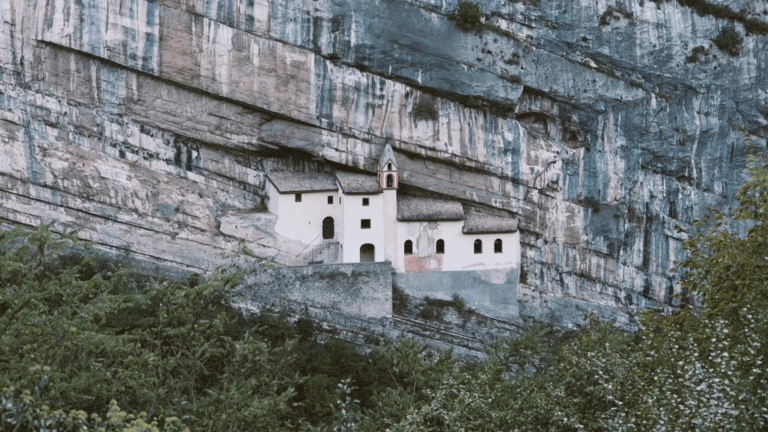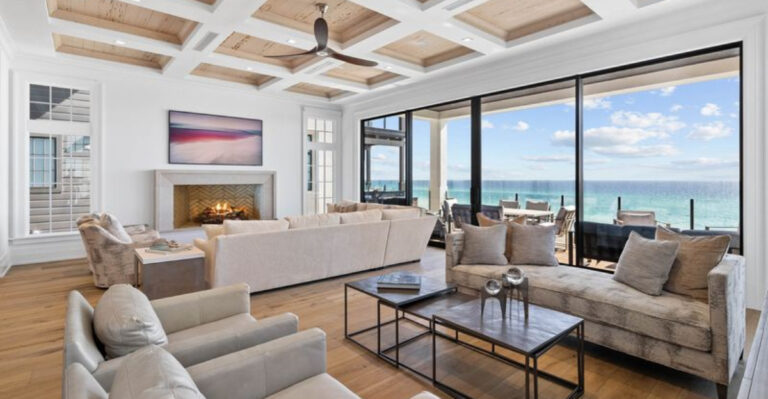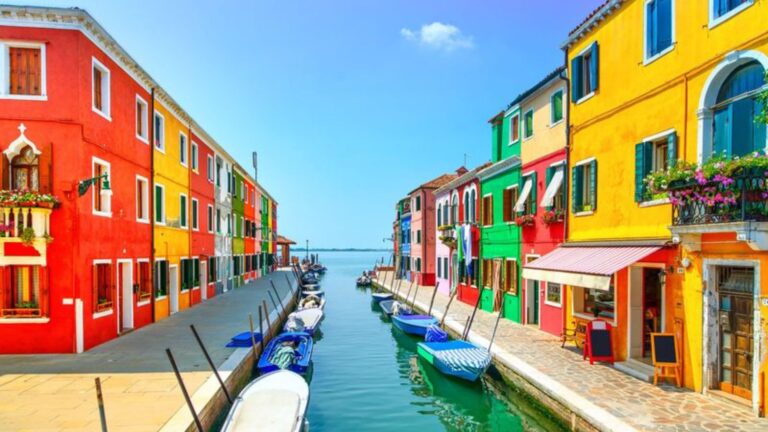The 18 Most Stunning Modernist Buildings In The World
Modernist architecture broke free from traditional styles, embracing clean lines, innovative materials, and bold forms.
These remarkable structures revolutionized how we think about buildings, transforming skylines and challenging our expectations.
From soaring skyscrapers to intimate homes, modernist masterpieces continue to inspire awe and admiration across the globe.
1. Fallingwater (Mill Run, Pennsylvania)
Nestled above a waterfall in Pennsylvania’s woods, Frank Lloyd Wright’s masterpiece seems to defy gravity. Built in 1939 as a weekend home for the Kaufmann family, this architectural wonder blends seamlessly with its natural surroundings.
The cantilevered terraces extend dramatically over Bear Run stream, creating the illusion that the house floats above the water. Natural materials like local sandstone harmonize with concrete planes, embodying Wright’s philosophy of organic architecture.
2. Sydney Opera House (Sydney, Australia)
What began as a controversial design by Danish architect Jørn Utzon transformed into Australia’s most recognizable symbol. Completed in 1973 after 14 years of construction challenges, this UNESCO World Heritage site captivates with its distinctive sail-shaped shells.
Against the sparkling harbor backdrop, the precast concrete shells create a visual symphony that changes throughout the day as light plays across their surfaces. More than a million gleaming ceramic tiles cover the exterior, making the structure shimmer in Sydney’s abundant sunshine.
3. Villa Savoye (Poissy, France)
Perched on slender columns, Le Corbusier’s 1931 masterpiece appears to float above the landscape like a geometric cloud. This revolutionary home embodied his “five points of architecture,” including roof gardens and horizontal windows that wrap around the façade.
Inside, a graceful ramp spirals through the heart of the building, connecting all levels in one continuous promenade. The pristine white exterior reflects Le Corbusier’s belief that homes should be “machines for living in” – functional, efficient, and beautiful in their mathematical precision.
4. Farnsworth House (Plano, Illinois)
Floating like a transparent jewel box above the Fox River floodplain, Mies van der Rohe’s 1951 weekend retreat represents minimalism at its purest. A mere eight steel columns support the entire structure, with floor-to-ceiling glass creating seamless boundaries between inside and out.
White-painted steel frames the glass walls, while travertine marble forms the elevated floor. During spring floods, the house appears to hover magically above the water, fulfilling Mies’s famous philosophy that “less is more” – stripping architecture to its essential elements.
5. Guggenheim Museum (Bilbao, Spain)
Walking around Frank Gehry’s titanium masterpiece feels like exploring a giant abstract sculpture. Completed in 1997, this revolutionary building transformed a declining industrial city into a major tourist destination – creating the term “Bilbao Effect” in urban planning.
Shimmering titanium panels catch sunlight like fish scales, while curved forms seem to dance along the Nervión River. Inside, massive galleries flow organically into one another, housing contemporary art beneath soaring ceilings. Computer technology enabled the construction of these previously unbuildable forms, making architecture history.
6. Casa Batlló (Barcelona, Spain)
Gazing upward at Antoni Gaudí’s fantastical façade, you might mistake it for a building made of bones and scales. Renovated in 1904, this apartment building embodies Catalan Modernisme with its undulating forms and skeletal window frames that locals nicknamed “House of Bones.”
The roof resembles a dragon’s back with iridescent ceramic scales, while interior spaces flow organically like underwater caves.
Though technically predating strict modernism, Gaudí’s revolutionary use of reinforced concrete and rejection of straight lines made him a pioneer whose influence stretched far beyond Barcelona.
7. Seagram Building (New York City, USA)
Standing tall on Park Avenue since 1958, this bronze and glass skyscraper redefined corporate architecture forever. The building’s elegant bronze-toned I-beams run vertically along its façade, emphasizing its height while revealing the structural elements normally hidden.
Floor-to-ceiling windows with amber-tinted glass complete the sophisticated expression of modernist principles, proving that commercial buildings could be both functional and beautiful.
8. Casa Malaparte (Capri, Italy)
Perched dramatically on a rocky cliff 32 meters above the Mediterranean Sea, this bold red house looks like it grew naturally from the rugged landscape.
Designed in the 1940s by Adalberto Libera for writer Curzio Malaparte, the structure features a striking trapezoidal form topped with a curved staircase leading to nowhere.
Without railings or barriers, the roof terrace creates a stage-like platform floating between sky and sea. Inside, simple rooms with rustic elements balance the exterior’s modernist severity.
9. Brasília Cathedral (Brasília, Brazil)
Sixteen curved concrete columns reach skyward like hands in prayer, forming the dramatic hyperboloid structure of Oscar Niemeyer’s 1970 cathedral. From outside, only the curved supports are visible, but stepping inside reveals a breathtaking explosion of light and color.
Stained glass panels fill the spaces between columns, bathing the circular nave in ethereal blue, green, and white light. The main sanctuary appears to float above the ground, accessed by a dark underground tunnel that makes the transition into the light-filled space even more dramatic.
10. Salk Institute (La Jolla, California)
Framing the perfect view of the Pacific Ocean, Louis Kahn’s 1965 research facility creates a space of almost spiritual contemplation. Two mirror-image concrete buildings face each other across a travertine courtyard, with a narrow channel of water running through the center toward the horizon.
Rough concrete walls contrast with warm teak wood details on the study towers that punctuate the façade. Kahn’s masterpiece demonstrates how modernist principles can create spaces that inspire both scientific innovation and profound human emotion.
11. Chemosphere House (Los Angeles, USA)
Hovering like a flying saucer above the Hollywood Hills, John Lautner’s octagonal house from 1960 became an instant icon of futuristic living. Built for an aerospace engineer on a seemingly unbuildable steep site, the ingenious solution uses a single 5-foot-wide concrete column to support the entire structure.
Floor-to-ceiling windows offer 360-degree views of the San Fernando Valley below. Featured in countless films, this “most modern home built in the world” represents California modernism at its most imaginative and optimistic.
12. Church of the Light (Ibaraki, Japan)
Entering Tadao Ando’s concrete masterpiece, visitors are struck by the dramatic cross of light cutting through solid darkness. Completed in 1989, this minimalist church uses only three materials – concrete, wood, and glass – to create a profoundly moving spiritual space.
Smooth concrete walls, cast with perfect precision, surround the simple rectangular volume. A cruciform opening in the east wall allows natural light to penetrate the otherwise austere interior.
13. Barcelona Pavilion (Barcelona, Spain)
Though it existed for just eight months in 1929, Ludwig Mies van der Rohe’s temporary exhibition structure changed architecture forever. Reconstructed in 1986, this horizontal composition of planes and reflections creates spaces that flow seamlessly between inside and outside.
A small pool reflects the pavilion’s elements while the famous Barcelona chairs – also designed by Mies – provide elegant seating. Despite its simplicity, the pavilion creates complex spatial experiences through reflections, transparencies, and the careful placement of a single Georg Kolbe sculpture.
14. Solomon R. Guggenheim Museum (New York City, USA)
Resembling a white ribbon wrapped into a gentle spiral, Frank Lloyd Wright’s 1959 museum challenged conventional gallery design with its continuous ramp. Visitors ascend to the top via elevator, then experience art while walking down the quarter-mile spiral that wraps around a dramatic central atrium.
Natural light floods the space through the glass dome overhead, illuminating the curved white walls where art is displayed. Though initially criticized as unsuitable for displaying art, the building itself has become one of New York’s most beloved works of art.
15. Ronchamp Chapel (Ronchamp, France)
Perched atop a hill in eastern France, Le Corbusier’s sculptural 1955 chapel looks different from every angle, defying architectural conventions. The thick, curved walls support a massive concrete roof that appears to float above a thin band of windows, creating the impression of a dark ship sailing through light.
Small, irregularly placed openings in the south wall scatter colored light across the dim interior like stars. Despite being one of modernism’s most recognizable buildings, Ronchamp’s powerful forms connect to ancient spiritual traditions, showing Le Corbusier’s evolution beyond pure functionalism.
16. Glass House (New Canaan, Connecticut)
Surrounded by 49 acres of manicured landscape, Philip Johnson’s transparent 1949 home reduces architecture to its absolute essence – a simple glass box revealing everything inside.
Johnson designed the landscape as a series of “rooms” complementing the house, with carefully framed views and sculptural elements. Despite its apparent simplicity, the house creates complex spatial experiences through reflections and the changing seasons visible through its transparent walls.
17. Nakagin Capsule Tower (Tokyo, Japan)
Resembling stacked washing machines, Kisho Kurokawa’s 1972 apartment building embodied the Metabolist movement’s vision of architecture that could grow and change like living organisms.
Each of the 140 prefabricated capsules could be removed and replaced without affecting the others, attached to two concrete cores containing elevators and utilities.
Though scheduled for demolition multiple times, preservationists fight to save this rare built example of Japanese Metabolism, representing a uniquely optimistic vision of future urban living.
18. Casa da Música (Porto, Portugal)
Rising from the plaza like a meteorite of white concrete, Rem Koolhaas’s 2005 concert hall challenges traditional performance space design with its faceted geometric form. Massive walls of corrugated glass at either end connect the auditorium to the city, allowing passersby glimpses of performances inside.
The 1,300-seat main concert hall features undulating walls covered in gold leaf and hand-painted tiles. Each of the smaller rehearsal rooms has a distinct character – one lined with cork, another with azulejos tiles.

